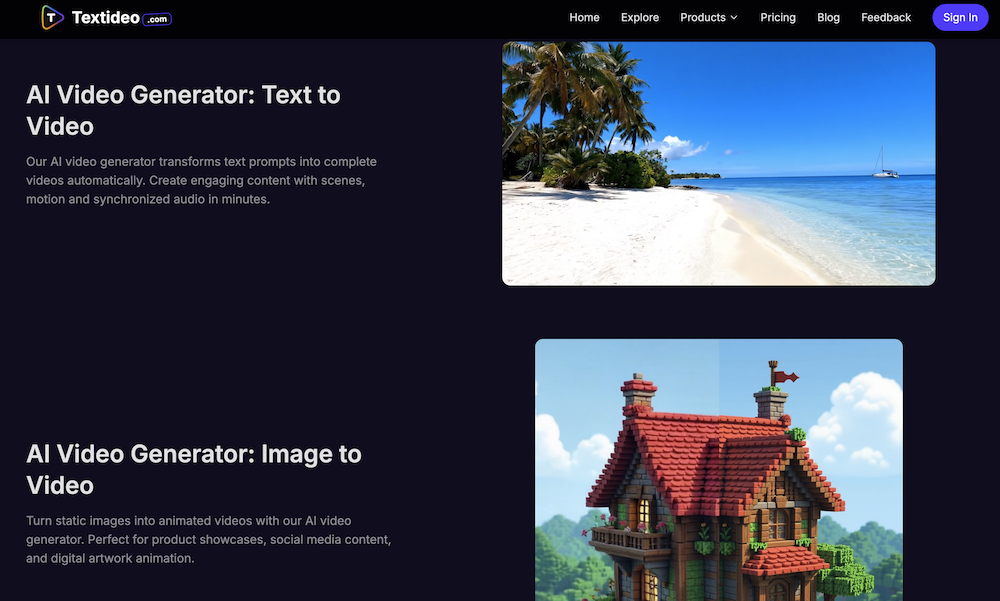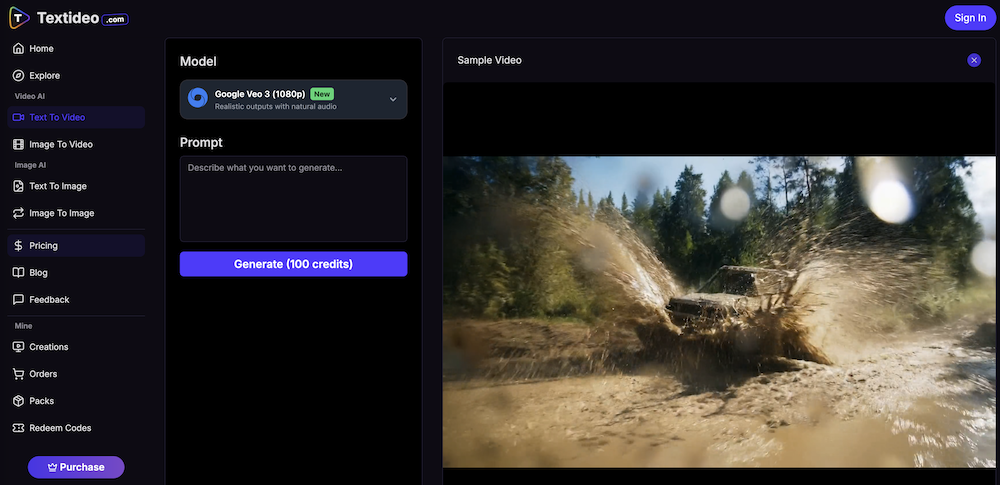Text to Speech AI Meets Seamless Video Production
Reframing Voice Technology in the Era of AI-Generated Multimedia
A Familiar Tool, Facing New Demands
 The past five years have witnessed the rise of text to speech AI from a niche tool to a mainstream solution across industries. Once confined to accessibility tools and robotic assistants, text to speech AI now powers e-learning modules, explainer videos, language training platforms, podcast production, and even audiobook creation.
The past five years have witnessed the rise of text to speech AI from a niche tool to a mainstream solution across industries. Once confined to accessibility tools and robotic assistants, text to speech AI now powers e-learning modules, explainer videos, language training platforms, podcast production, and even audiobook creation.
The appeal of text to speech AI is clear: AI-generated voices offer consistent tone, multilingual capabilities, and cost-efficiency. Still, despite remarkable progress in voice quality and diversity, the way text to speech AI is used remains largely disconnected from broader content creation workflows—a gap that innovative platforms like textideo.com are beginning to close by integrating voice technology directly into automated video creation.
The Workflow Gap: When Voice Is Isolated
For all its advantages, traditional text to speech AI often introduces friction in the production pipeline. Creators typically:
- Draft a script.
- Paste it into a text to speech AI interface.
- Export the synthesized audio.
- Import it into a video or animation editor.
- Align voice timing with visuals.
- Finalize and export the content.
This segmented process slows down production and introduces points of failure. Audio may need re-rendering. Sync issues arise. Tone mismatches are common. For solo creators or educators, every step adds cognitive and technical overhead.
Consider a business coach creating short-form video content. Each 60-second clip requires a script, a clean voiceover via text to speech AI, editing in a separate platform, and sometimes a third tool to layer visuals. The process is laborious—even when voice synthesis through text to speech AI is near-perfect.
The Integration Solution: Voice as Part of the System
What if text to speech AI wasn’t a separate tool—but instead embedded into a larger, automated creative platform?
That’s the core proposition behind Textideo.com, a platform that eliminates the need to handle text to speech AI independently. Instead, users simply input a script, and the system automatically generates a complete, voiced video with relevant visuals.
“I stopped thinking about the voice part entirely,” says Grace Lee, an ESL instructor who now produces lesson videos with Textideo. “The platform handles the text to speech AI, the visuals, the timing. It’s the closest thing I’ve found to a truly end-to-end solution.”
Here, text to speech AI becomes invisible—not removed, but absorbed into a seamless workflow.
How Textideo Reframes Voice Generation
 Unlike standalone text to speech AI apps, Textideo doesn’t just synthesize speech. It choreographs it. The synthesized voice generated by text to speech AI is automatically timed with video transitions, paced to match the tone of the content, and styled according to the selected theme.
Unlike standalone text to speech AI apps, Textideo doesn’t just synthesize speech. It choreographs it. The synthesized voice generated by text to speech AI is automatically timed with video transitions, paced to match the tone of the content, and styled according to the selected theme.
- There’s no need to export audio.
- No manual syncing of voice tracks.
- No third-party software required.
What once took several applications and hours of post-production can now be accomplished in minutes through integrated text to speech AI.
Even more importantly, text to speech AI in Textideo is not an upsell or plugin—it’s a foundational feature. It’s used in every video, from marketing explainers to educational content, without extra fees or subscription requirements.
The Structural Shift: TTS as Infrastructure
This evolution mirrors broader trends in software. Just as cloud storage shifted from user-managed folders to automatic background syncing, text to speech AI is shifting from being a tool to becoming infrastructure.
In content platforms like Textideo, creators no longer interact directly with text to speech AI. They simply input text, and the platform does the rest. The result is faster output, fewer tools to learn, and less technical friction.
For teachers, this means recording voiceovers using text to speech AI is no longer a separate task. For startups, it means creating branded, professional videos with narration—without hiring voice talent or editors—thanks to embedded text to speech AI.

Why Density of Automation Matters
Many emerging video AI tools focus on image generation, transitions, and visual storytelling. But very few integrate text to speech AI at the same level. This leaves users dependent on external tools, weakening the overall automation chain.
By contrast, Textideo’s model positions text to speech AI at the heart of content automation. It becomes the voice of your video—literally and structurally—delivered without interrupting your creative flow.
A Look Ahead: The Future of Invisible AI Narration
As creators look to scale content production across platforms, languages, and formats, text to speech AI will continue to play a vital role. But that role is changing.
No longer just a voice generator, modern text to speech AI must be able to adapt to timing, context, emotion, and platform constraints. And more importantly, it must do so without requiring the user to manage multiple interfaces.
Platforms like Textideo are paving the way for this shift. By deeply integrating text to speech AI into every phase of the content pipeline, they demonstrate how AI narration can become a background service—present in every piece of content, yet invisible to the creator.

Final Thoughts
Text to speech AI is no longer just a tool for developers or accessibility experts—it’s becoming part of the creative infrastructure. And while voice synthesis alone can enhance production, it’s platforms like Textideo that show how integrated, intelligent automation unlocks the full potential of synthetic voice.
As we move toward a future where every line of text can become spoken narrative, and every script a published video, text to speech AI won’t just be part of the workflow—it will be the silent engine behind it.
Experience this shift today: Create a fully narrated, AI-generated video in minutes at Textideo.com—no voice recording, syncing, or subscriptions required.